I present herewith this for your perusal, discussion and thought. It may even raise questions. 
William Fishman, Senior Research Fellow & Tutor in Politics at Queen Mary College, spoke at a Lecture in 1978 for The 1978 Tower Hamlets Annual Local History Lecture at the Central Library, Bancroft Road, which an abridged article was based on in 1979, in the East London Record (no.2) 1979. Parts of that article from that lecture, from the East End News, 13th November 1888 reveals the following concerning Parish Guardian Statistics...
The East End News reports near the end of the year (13 November, 1888) that the total known mean number of paupers in London in 1887-8 was 108,638 compared with 104,431 the year before. In East London at the beginning of December 1888 official pauper numbers parish by parish were:
Whitechapel 1,503 (Indoor Poor)
St. George's 1,164 (plus 333 Lunatics)
Poplar 3,956 (2,192 Indoor and 1,764 Outdoor Poor)
Mile End 1,842 (1,340 Indoor and 502 Outdoor Poor)
This gives an indication, especially to those not aware of the conditions of the East End of London, the extent of the poverty. Please notice the amount of "lunatics" and the "outdoor poor".
Charles Booth, said the following:-
Based on the years 1887-1888, 35% of the total population of Tower Hamlets, i.e. 35% of 456,877 souls, lived on or below the margin of subsistence. Another 20% wavered on the brink and it was this overwhelming proportion of poverty that provided the qualifying image of the area as a 'city of dreadful night'.
This then, the background for the women that walked the streets.
Margaret Harkness - socialist, feminist and novelist wrote about life in and around Tower Hamlets 1888, and as Fisherman says..
"Tower Hamlets is brought to life for us in a series of brilliant vignettes portrayed in her remarkable novels (written significantly under the pseudonym John Law): Out of Work (published 1888) and Captain Lobe: or In Darkest London (1889)."
and further....
Her revelation of the degradation of women is striking. In the predatory climate engendered by casual 'laissez-faire' women appeared to be the most vulnerable. The affliction of labour in constant competition for work bore heaviest on East End women. Observing a group of girls applying for work in a local factory Harkness notes:
A more miserable set of girls it would be difficult to find anywhere. They had only just escaped the Board School, but many of them had faces wise with wickedness, and eyes out of which all traces of maidenhood had vanished ... "the universal adjective" fell from their lips as a term of endearment, whilst the foulest names were given to girls they did not like, also blows and kicks by way of emphasis.
They were offered work at 5d. a day - 'enough to buy bread with'. As new recruits to the vast reservoir of the labourless, they had no alternative but to accept. 'It's no good to talk to the girls about combination, they're so down-trodden and mean-spirited. It's work, work, work with them from the time they get up till they go to bed, except on Sundays'. At the lowest level it could be an unrewarding struggle for life. As a child the girl would be 'mother' to a large ever-increasing brood, should her own be out charing or 'taking to the laundry' to augment her man's meagre income (if not already unemployed!). She faced continual hazards; possibly an incestuous attack by father or brother, a constant beating by drunken parent, perhaps the only relief by taking to the streets. Innocence always short-lived - here the story of man's inhumanity to woman is most blatant. Harkness reiterated that the overwhelming pressure was the need to eat. 'Virtue is easy enough when a woman has plenty to eat, and a character to keep, but it's quite different when a girl is starving'. Yet mutual aid, the poor helping the poor in adversity, was never absent, it is still endemic in East End life.
They're good to one another, they are. You'd be surprised to see what they'll do to help a girl that's ill, and how they'll put themselves about to buy crape when a girl is dead and has to be buried.
Harkness notes one lodging house where 'A clergyman found his way in one Sunday evening. He was stripped, in order that the men might see if he was a detective. Finding all his linen marked with the same name and nothing in his pockets, they kicked him out naked, advising him never to come there again unless he was plentifully supplied with soup tickets!'.
And further, Harkness says...
For the homeless 'armies of despairs' - and they were in their hundreds here - there were two legal alternatives for survival - a charitable institution, like the Salvation Army, or the ultimate humiliation conferred on both genuine unemployed and pauper alike - the hated Bastille - the workhouse.
Here is an 1888 description of the Whitechapel workhouse, a model of its kind, recalling the clinical inhumanity of a labour camp.
Ringing the workhouse bell, they enter into a forecourt of neat flower beds, closely shaven grass plots, smooth paths, and trees which had been pruned until their branches had reached the legitimate amount of foliage. The Bastille stretched further than the eye could see, and seemed a standing rebuke to its poverty-stricken surroundings, for it was clean ... not a spot on it, not a stain, nothing to show a trace of sympathy with the misery and sin of the people who lived in this neighbourhood.
The Whitechapel Union is a model workhouse; that is to say it is the Poor Law Incarnate in stone and brickwork. The men are not allowed to smoke in it, not even when they are in their dotage; the young women never taste tea, and the old ones may not indulge in a cup during the long afternoons, only at half past six o'clock morning and night, when they receive a small hunch of bread with butter scraped over the surface, and a mug of meat beverage which is so dear to their hearts as well as their stomachs. The young people never go out, never see a visitor, and the old only get one holiday in the month. Then the aged paupers may be seen skipping like lambkins outside the doors of the Bastille, while they jabber to their friends and relatives. A little gruel morning and night, meat twice a week, that is the food of grown-up people, seasoned with hard work and prison discipline. Doubtless this Bastille offers no premium to idle and improvident habits, but what shall we say of the woman, or man, maimed by misfortune, who must come there or die in the street?
This then, is a partial view we may miss when we think of Annie, Polly, Liz, Kate and Mary. For four of them DID die in the street. From something so horrible..on top of the everyday battle to survive.
best wishes
Phil

William Fishman, Senior Research Fellow & Tutor in Politics at Queen Mary College, spoke at a Lecture in 1978 for The 1978 Tower Hamlets Annual Local History Lecture at the Central Library, Bancroft Road, which an abridged article was based on in 1979, in the East London Record (no.2) 1979. Parts of that article from that lecture, from the East End News, 13th November 1888 reveals the following concerning Parish Guardian Statistics...
The East End News reports near the end of the year (13 November, 1888) that the total known mean number of paupers in London in 1887-8 was 108,638 compared with 104,431 the year before. In East London at the beginning of December 1888 official pauper numbers parish by parish were:
Whitechapel 1,503 (Indoor Poor)
St. George's 1,164 (plus 333 Lunatics)
Poplar 3,956 (2,192 Indoor and 1,764 Outdoor Poor)
Mile End 1,842 (1,340 Indoor and 502 Outdoor Poor)
This gives an indication, especially to those not aware of the conditions of the East End of London, the extent of the poverty. Please notice the amount of "lunatics" and the "outdoor poor".
Charles Booth, said the following:-
Based on the years 1887-1888, 35% of the total population of Tower Hamlets, i.e. 35% of 456,877 souls, lived on or below the margin of subsistence. Another 20% wavered on the brink and it was this overwhelming proportion of poverty that provided the qualifying image of the area as a 'city of dreadful night'.
This then, the background for the women that walked the streets.
Margaret Harkness - socialist, feminist and novelist wrote about life in and around Tower Hamlets 1888, and as Fisherman says..
"Tower Hamlets is brought to life for us in a series of brilliant vignettes portrayed in her remarkable novels (written significantly under the pseudonym John Law): Out of Work (published 1888) and Captain Lobe: or In Darkest London (1889)."
and further....
Her revelation of the degradation of women is striking. In the predatory climate engendered by casual 'laissez-faire' women appeared to be the most vulnerable. The affliction of labour in constant competition for work bore heaviest on East End women. Observing a group of girls applying for work in a local factory Harkness notes:
A more miserable set of girls it would be difficult to find anywhere. They had only just escaped the Board School, but many of them had faces wise with wickedness, and eyes out of which all traces of maidenhood had vanished ... "the universal adjective" fell from their lips as a term of endearment, whilst the foulest names were given to girls they did not like, also blows and kicks by way of emphasis.
They were offered work at 5d. a day - 'enough to buy bread with'. As new recruits to the vast reservoir of the labourless, they had no alternative but to accept. 'It's no good to talk to the girls about combination, they're so down-trodden and mean-spirited. It's work, work, work with them from the time they get up till they go to bed, except on Sundays'. At the lowest level it could be an unrewarding struggle for life. As a child the girl would be 'mother' to a large ever-increasing brood, should her own be out charing or 'taking to the laundry' to augment her man's meagre income (if not already unemployed!). She faced continual hazards; possibly an incestuous attack by father or brother, a constant beating by drunken parent, perhaps the only relief by taking to the streets. Innocence always short-lived - here the story of man's inhumanity to woman is most blatant. Harkness reiterated that the overwhelming pressure was the need to eat. 'Virtue is easy enough when a woman has plenty to eat, and a character to keep, but it's quite different when a girl is starving'. Yet mutual aid, the poor helping the poor in adversity, was never absent, it is still endemic in East End life.
They're good to one another, they are. You'd be surprised to see what they'll do to help a girl that's ill, and how they'll put themselves about to buy crape when a girl is dead and has to be buried.
Harkness notes one lodging house where 'A clergyman found his way in one Sunday evening. He was stripped, in order that the men might see if he was a detective. Finding all his linen marked with the same name and nothing in his pockets, they kicked him out naked, advising him never to come there again unless he was plentifully supplied with soup tickets!'.
And further, Harkness says...
For the homeless 'armies of despairs' - and they were in their hundreds here - there were two legal alternatives for survival - a charitable institution, like the Salvation Army, or the ultimate humiliation conferred on both genuine unemployed and pauper alike - the hated Bastille - the workhouse.
Here is an 1888 description of the Whitechapel workhouse, a model of its kind, recalling the clinical inhumanity of a labour camp.
Ringing the workhouse bell, they enter into a forecourt of neat flower beds, closely shaven grass plots, smooth paths, and trees which had been pruned until their branches had reached the legitimate amount of foliage. The Bastille stretched further than the eye could see, and seemed a standing rebuke to its poverty-stricken surroundings, for it was clean ... not a spot on it, not a stain, nothing to show a trace of sympathy with the misery and sin of the people who lived in this neighbourhood.
The Whitechapel Union is a model workhouse; that is to say it is the Poor Law Incarnate in stone and brickwork. The men are not allowed to smoke in it, not even when they are in their dotage; the young women never taste tea, and the old ones may not indulge in a cup during the long afternoons, only at half past six o'clock morning and night, when they receive a small hunch of bread with butter scraped over the surface, and a mug of meat beverage which is so dear to their hearts as well as their stomachs. The young people never go out, never see a visitor, and the old only get one holiday in the month. Then the aged paupers may be seen skipping like lambkins outside the doors of the Bastille, while they jabber to their friends and relatives. A little gruel morning and night, meat twice a week, that is the food of grown-up people, seasoned with hard work and prison discipline. Doubtless this Bastille offers no premium to idle and improvident habits, but what shall we say of the woman, or man, maimed by misfortune, who must come there or die in the street?
This then, is a partial view we may miss when we think of Annie, Polly, Liz, Kate and Mary. For four of them DID die in the street. From something so horrible..on top of the everyday battle to survive.
best wishes
Phil

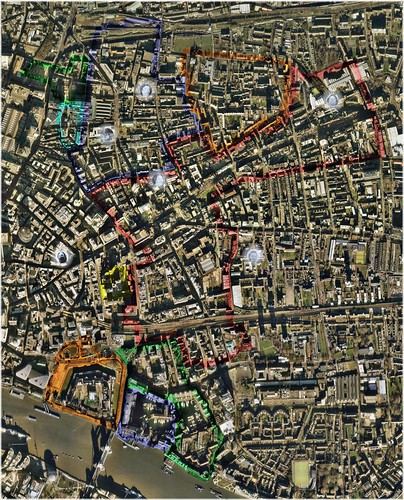




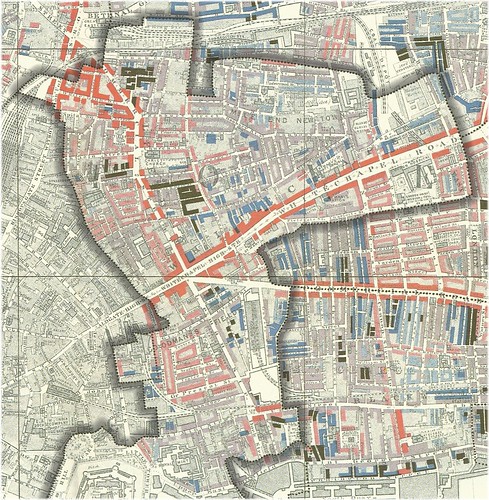
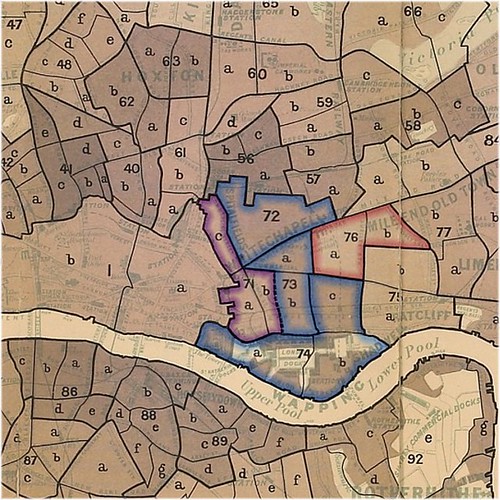
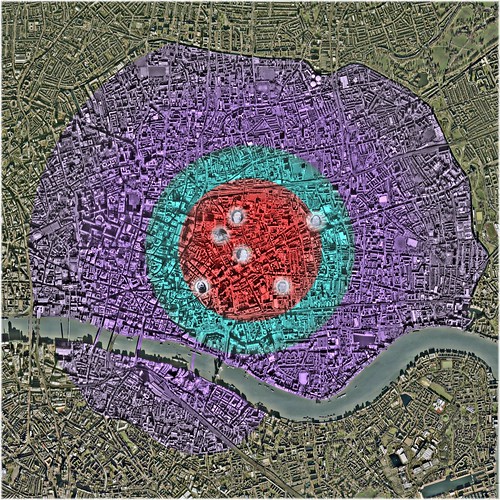

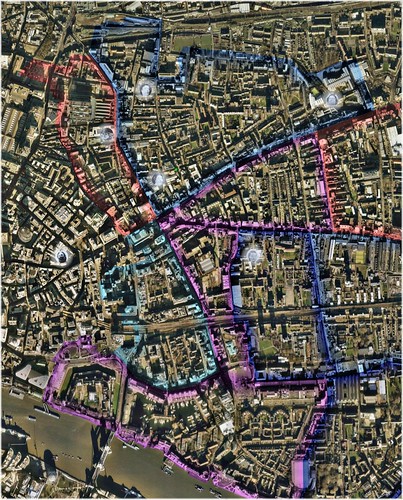

Comment